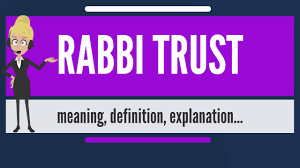A sinking fund is an excellent approach to saving for a major expense over time. They’re yet another illustration of how budgets allow you to spend—and spend large this time! And they demonstrate how easy it is to pay cash for anything.
We’ll go over what sinking funds are and how you can use them every month.
What is a Sinking Fund?
A sinking fund is a type of fund that is created and established specifically for the aim of repaying debt. The account’s owner consistently sets aside a specified amount of money for a specific purpose. Corporations frequently utilize it for bonds and deposit money to buy back issued bonds or parts of bonds before the maturity date arrives. It is also one method of attracting investors because the fund makes them believe that the issuer will not default on their payments.
Essentially, sinking funds are established to make debt repayment easier and to ensure that a default does not occur due to a sufficient amount of money available to settle the loan. Though most bonds expire over several years, it is always easier and more convenient to be able to reduce the principal amount well before it matures, minimizing credit risk.
Sinking Fund Account Types
If you believe a sinking fund is a smart approach, you must first pick what form of account to start. The savings accounts listed below are some instances of sinking funds.
#1. Savings account
A free checking account can be an excellent choice for a sinking fund. You can access your funds whenever you want with a checking account. If you only need to save for one significant purchase, you can utilize a supplementary checking account to keep money set aside for that purpose. To get the most out of your money, look for checking accounts with greater interest rates.
#2. Traditional savings account
For your sinking fund, you can alternatively utilize a conventional savings account. You can open a new savings account with your current bank or credit union, making it simple to transfer funds as needed. Traditional savings accounts, on the other hand, do not usually have strong interest rates, so if you want to get a return on your money, this may not be the ideal option.
#3. HYSA (high-yield savings account)
A high-yield savings account has a greater annual percentage yield (APR) than a standard savings account, which means you will earn more interest. Using an HYSA as a sinking fund can help you earn a higher return on your savings, allowing you to attain your goal sooner. Due to lower overhead costs than a traditional bank, you can typically get the best HYSA with an online bank with a higher APY.
Accounting for Sinking Funds in Business
A sinking fund is often recorded on a company’s balance sheet as a noncurrent asset—or long-term asset—and is frequently included in the listing for long-term investments or other investments.
Long-term bonds are typically issued by capital-intensive companies to fund the purchase of new plants and equipment. Oil and gas companies require a considerable quantity of cash or money to fund long-term operations such as oil rigs and drilling equipment.
Real Example of a Sinking Fund
Consider a 7-Eleven franchisee who issues $50,000 in bonds with a sinking fund provision and forms a sinking fund into which the franchisee regularly deposits $500 with the goal of using it to gradually buy back bonds before they mature.
The provision allows him to repurchase the bonds at a lesser price if the market price falls, or at face value if the market price rises. The principal amount owed will eventually be reduced, depending on how much was purchased back. However, keep in mind that there is a limit to how many bonds can be purchased before the maturity date.
Another example is a corporation that issues $1 million in bonds that mature in 10 years. Given this, it establishes a sinking fund and deposits $100,000 per year to ensure that all bonds are purchased by the maturity date.
Benefits of a Sinking Fund
The following are some of the benefits of sinking funds:
#1. Attracts investors
Investors are generally aware that corporations or organizations with a lot of debt are potentially dangerous. However, if they realize that a sinking fund is in place, they will see a certain level of security for themselves, so that in the event of a default or bankruptcy, they will still be able to recover their investment.
#2. The potential for reduced interest rates
A company with a low credit rating would struggle to recruit investors unless it offers higher interest rates. A sinking fund provides investors with an alternate form of protection, allowing enterprises to offer lower interest rates.
#3. Financial stability
The economic status of a corporation is not always certain, and certain financial concerns can shake its stable base. A sinking fund, on the other hand, ensures that a company’s capacity to repay its debts and purchase back bonds is not jeopardized. This leads to strong credit status and confident investors.
Drawbacks of a Sinking Fund
Sinking funds, on the other hand, have several drawbacks, such as the following:
#2. Progress is slow.
Saving for a major expense can take a long time, and you may become disheartened if it takes a long time to attain your financial goal.
#3. Budget problems.
If you don’t have enough money set aside for a sinking fund, you risk stretching your budget too thin to meet your objective and getting into financial problems.
It is possible to become overwhelmed. When trying to maintain track of a large number of sinking funds, it is easy to become overwhelmed.
How Sinking Funds Can Be Utilized as a Budgeting Technique
While some expenses are unexpected, others are predictable, making them much easier to budget for. A sinking fund can be used as a budgeting tool to assist you in saving for certain future expenses that you anticipate. You can utilize a sinking fund to save for a cost gradually over time rather than having to use a credit card or money from your emergency fund whenever you need to pay for it.
Budgeting programs like Monarch Money or Quicken can also help you keep track of your monthly costs, including your sinking fund.
How To Start a Sinking Fund
Once you’ve decided to go this path, setting up sinking funds is a breeze. To get started, simply follow these steps.
Step #1: Determine what you want to save for.
The first step is to figure out why you’re saving money. Do you wish to replace your old fridge with a new one? Are you planning a family vacation to the beach in the coming months? Do you want a new automobile but don’t want to take out a large car loan? All of these expenses can be covered by a sinking fund.
Step #2: Establish a financial objective.
Once you’ve decided what you’re saving for, you must figure out how much it will cost. If the new fridge you want costs $1,000, set that as your sinking fund objective.
Step #3: Establish a timetable.
The next step is to choose when you want to have the money for the expense. To reach the objective of buying the fridge in 5 months, you’ll need to put $200 every month into your sinking fund.
Step #4: Decide where you’ll save your money.
Now that you’ve determined your desired amount and due date, it’s time to pick where you’ll keep the money. A high-yield savings account, or HYSA, is a fantastic choice for a sinking fund because you’ll have access to the funds when you need them and will receive a nice return on your savings.
Step #5: Restructure your budget.
The next step is to work on your budget to ensure that you have enough money to contribute to your sinking fund. It’s critical to be realistic—for example, if you don’t have $200 to save each month, you may need to stretch your schedule or consider a cheaper fridge. You can, however, take this as a time to go through your budget and see if there are any costs you can put on wait while saving for the new fridge.
Consider utilizing a service like Quicken to track your expenditures and see where you can cut back to free up more funds for sinking fund contributions to make budgeting easier. This can help you prioritize your costs and guarantee that you’re on track to meet your savings goals, whether they’re for a new refrigerator or another financial milestone.
How Many Sinking Funds Do I Need?
There is no perfect number of sinking funds; it will be determined by your budget and savings objectives. However, having too many sinking funds might confuse your budget and make meeting your goals more difficult. whether you’re saving for a variety of purposes, check with your financial institution to see whether they offer savings accounts with customizable buckets. You just need to maintain track of one account this way, but you’re still employing the sinking fund technique to save for certain future expenses.
Savings Account vs. Sinking Fund
A sinking fund is a sort of savings account that is handled differently than a standard savings account. Regular savings accounts allow you to deposit money each week or month, and it grows until you need it. A sinking fund is similar, with one major difference: you determine what you’re saving for, how much you need to save, and how much you’ll set aside on a regular basis.
Once you’ve met your goal, you can utilize the money from your sinking fund to buy the item you’ve been saving for.
Emergency Fund vs. Sinking Fund
Another form of savings account, emergency funds are intended to assist you pay for unforeseen needs. Experts recommend putting aside three to six months’ worth of spending in an emergency fund. When faced with an unexpected medical bill, an expensive household or automobile repair, or unemployment, you could use funds from this account. Having a sinking fund for a scheduled expense means you won’t be tempted to go into your emergency fund to help pay for an item you know you’ll have, which can be better for your finances in the long term.
Are Sinking Funds Appropriate For You?
If you have a future expense that you need to pay for, a sinking fund is an excellent option. When you use a sinking fund instead of diving into your emergency fund for a new couch or a weekend away, you can save money over time. A sinking fund poses minimal to no risk because you are just using savings accounts to carefully plan for anticipated costs.
Where To Continue Sinking Funds
A high-yield savings account is typically the greatest location to keep sinking funds. An HYSA is comparable to a standard savings account in that you can deposit and withdraw funds, but it pays a higher interest rate. That implies an HYSA can earn you more money on your savings than a typical savings account.
Of course, a standard savings or checking account can also be used as a sinking fund. Alternatively, you can itemize funds in your existing savings account so that you know how much is set aside for each expense.
Is It Possible To Withdraw Sinking Funds?
The majority of people maintain sinking funds in a checking or savings account, making them available at any time.
Is a Sinking Fund Risky?
A sinking fund is a low-risk method of saving money. There is no risk of losing money if you utilize a standard checking or savings account to store money in a sinking fund, as there is if you invest the money.
Is It Possible To Use Sinking Funds For Repairs?
A sinking fund can be used to cover any anticipated future expenses. If you know you’ll need to repair your deck next summer, you can save for it using a sinking fund. However, if your furnace breaks and needs to be replaced, you’ll have to delve into your emergency fund to meet the cost.
Last Thoughts
A sinking fund is simple to set up and understand. Many people, however, fail to establish one because they lack the discipline to set away a specified amount on a regular basis.
- It’s Time to Focus on Saving Money
- HOW TO SAVE MONEY FOR A HOUSE: Simple Tips
- HOW TO SAVE FOR A HOUSE IN 2023: Ultimate Guide
- SAVINGS ACCOUNT: Definition and How to Open One






